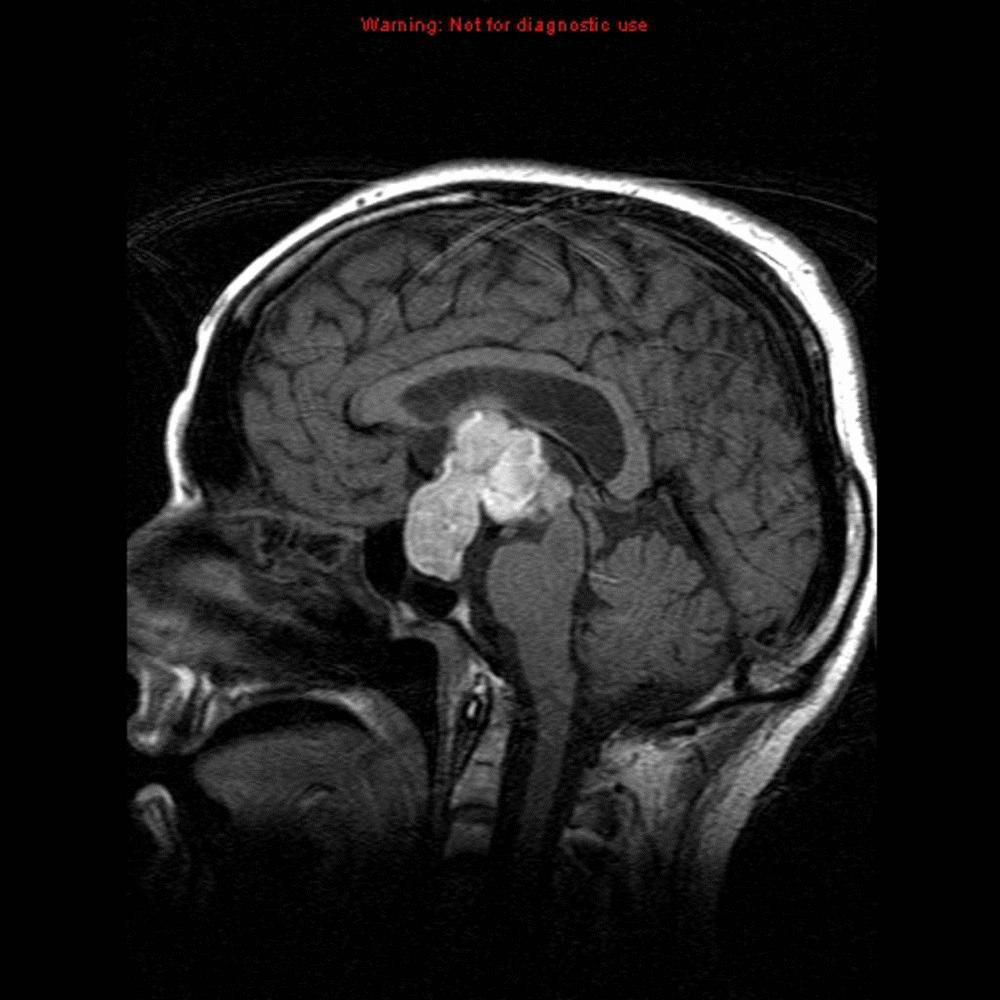Growth hormone deficiency MRI
|
Growth hormone deficiency Microchapters |
|
Differentiating Growth hormone deficiency from other Diseases |
|---|
|
Diagnosis |
|
Treatment |
|
Case Studies |
|
Growth hormone deficiency MRI On the Web |
|
American Roentgen Ray Society Images of Growth hormone deficiency MRI |
|
Risk calculators and risk factors for Growth hormone deficiency MRI |
Editor-In-Chief: C. Michael Gibson, M.S., M.D. [1]; Associate Editor(s)-in-Chief: Mohammed Abdelwahed M.D[2]
Overview
Brain MRI may be helpful in the diagnosis of growth hormone deficiency. On T1-weighted imaging, a clear demarcation can be made between the adenohypophysis and the neurohypophysis, which appears as hyperintense. Other pituitary abnormalities such as anterior pituitary hypoplasia, pituitary stalk agenesis, and posterior pituitary ectopia can be diagnosed using MRI.
MRI
- MRI is highly sensitive to visualize the hypothalamo-hypophyseal tract. After the clinical and biochemical diagnosis of GHD is made Findings on MRI include:[1]
- On T1-weighted imaging, a clear demarcation can be made between the adenohypophysis and the neurohypophysis, which appears as hyperintense.[2]
- This imaging is important to exclude the possibility of a pituitary tumor. It also permits diagnostic characterization by showing the presence or absence of morphological abnormalities such as anterior pituitary hypoplasia, pituitary stalk agenesis, and posterior pituitary ectopia.
- Pituitary stalk interruption syndrome (PSIS) can be diagnosed using MRI aslo.[3]



References
- ↑ Growth Hormone Research Society (2000). "Consensus guidelines for the diagnosis and treatment of growth hormone (GH) deficiency in childhood and adolescence: summary statement of the GH Research Society. GH Research Society". J Clin Endocrinol Metab. 85 (11): 3990–3. doi:10.1210/jcem.85.11.6984. PMID 11095419.
- ↑ Dietrich RB, Lis LE, Greensite FS, Pitt D (1995). "Normal MR appearance of the pituitary gland in the first 2 years of life". AJNR Am J Neuroradiol. 16 (7): 1413–9. PMID 7484625.
- ↑ Maghnie M, Strigazzi C, Tinelli C, Autelli M, Cisternino M, Loche S; et al. (1999). "Growth hormone (GH) deficiency (GHD) of childhood onset: reassessment of GH status and evaluation of the predictive criteria for permanent GHD in young adults". J Clin Endocrinol Metab. 84 (4): 1324–8. doi:10.1210/jcem.84.4.5614. PMID 10199773.